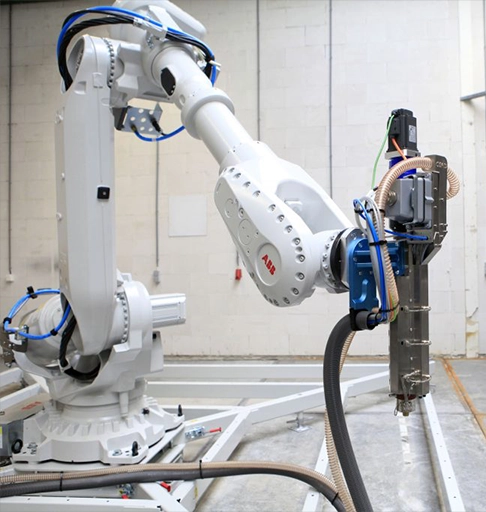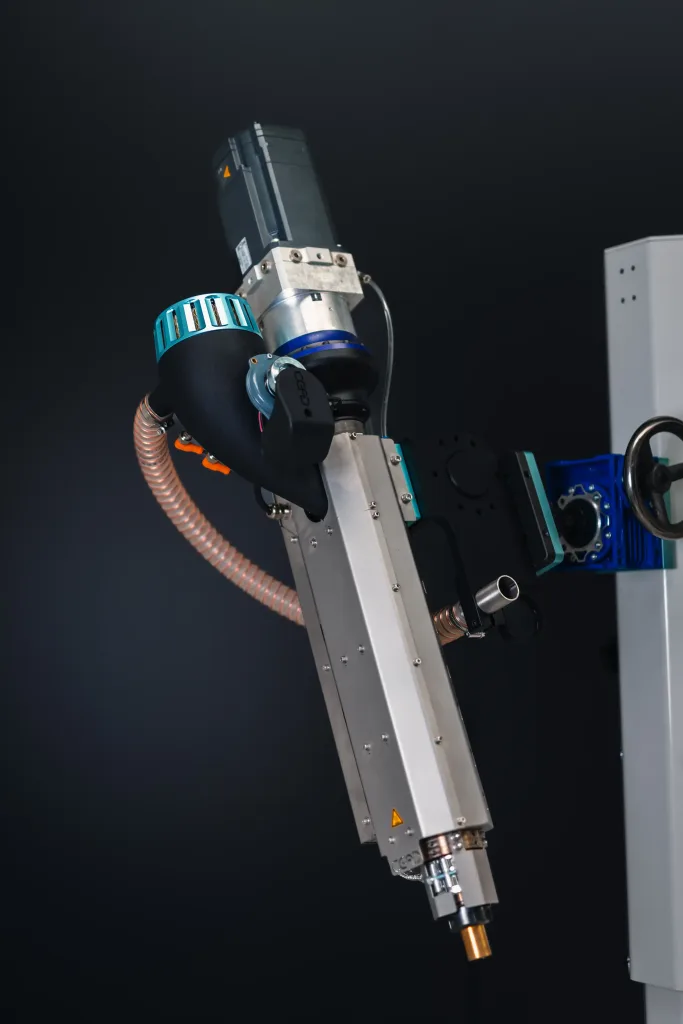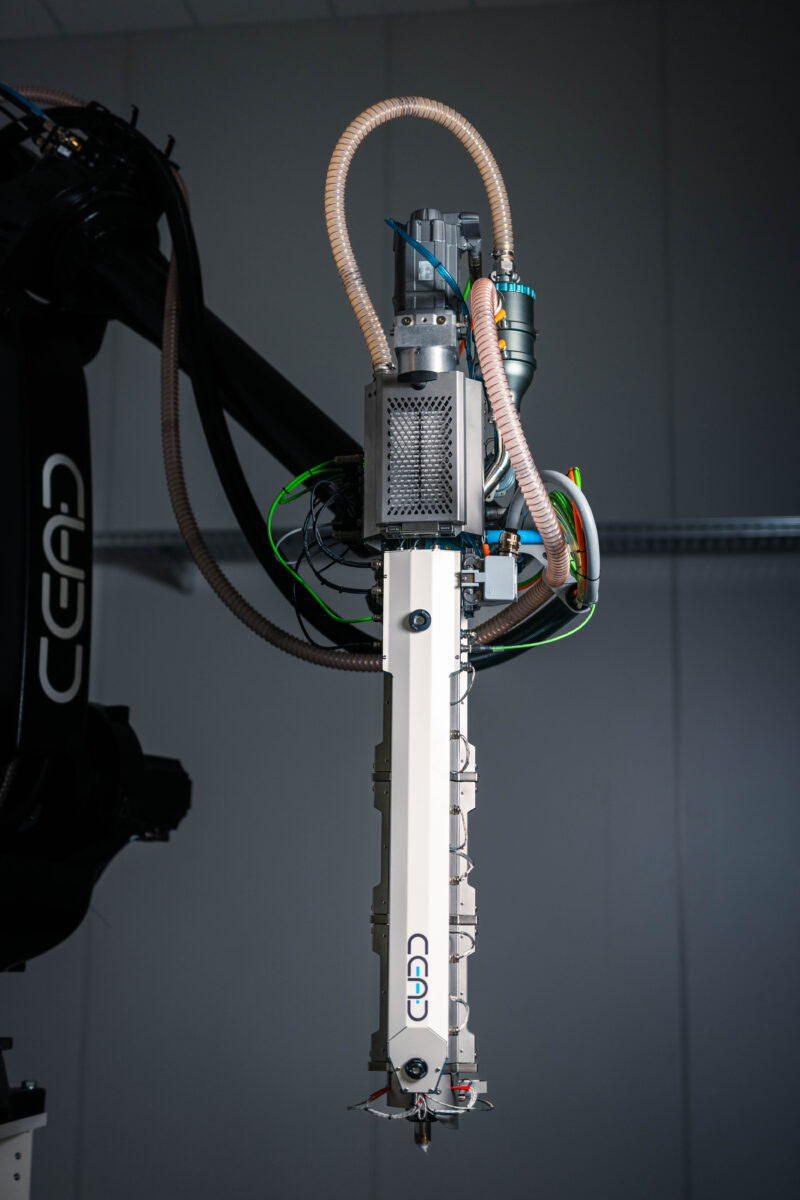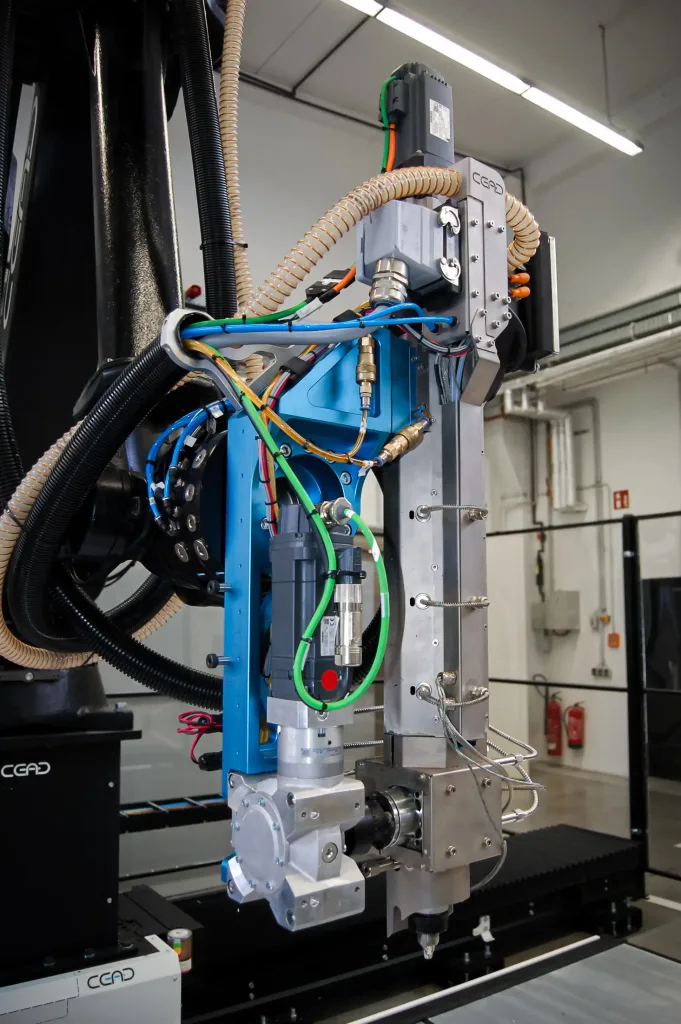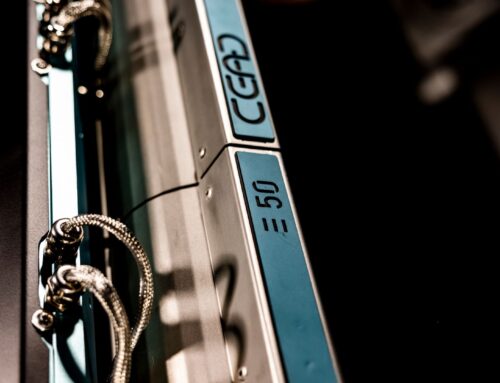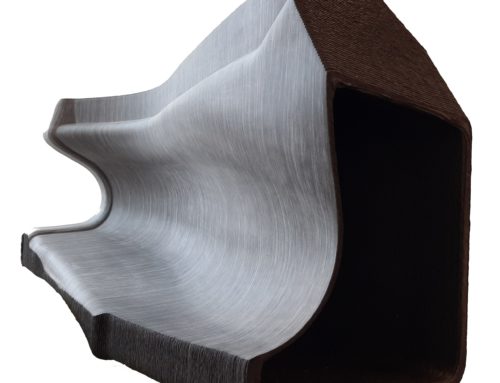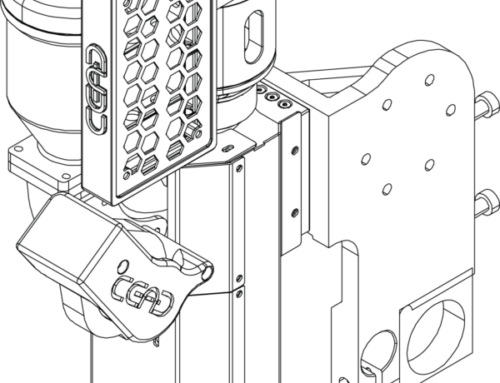At CEAD, we are constantly developing new solutions to anticipate the needs of the industry. Over the years, we have developed a range of extruders, varying in terms of weight, output, heating power and other specifications. Depending on the application and build volume, a different extruder is desired.
Choosing the right extruder for your application might seem overwhelming, which is why we will walk through our portfolio in the following article.
The RE-series
The robot extruder (RE)-series consists of several models designed to be mounted on robotic arms or gantry-systems. The name is derived from the fact that they were originally developed for our robot-based system called the Flexbot, which was officially launched in 2019. However, CEAD extruders can be easily integrated onto gantry systems too.
The result can be seen in a collaboration with our partners from Belotti, CNC specialists, with whom we have launched the BEAD. In fact, the extruders come as complete standalone systems, accompanied with a base unit that controls temperature, extrusion speed, automatic material transport and which ensures safe operations.
We offer ancillary systems that help to maximize your workflow, such as a pellet dryer and a proprietary print bed. Our standalone extruders are therefore an ideal investment option into 3D printing when you are already in the possession of a robotic arm or a CNC machine. All our extruders are developed and assembled in-house by our team of engineers, ensuring the highest possible quality.
Material processing
The extruders are designed to process thermoplastic pellet materials. There are several advantages to using thermoplastic pellets over other materials. One main advantage of thermoplastics is that they can be shredded and reused more easily, decreasing the environmental footprint of 3D printed parts. To learn more about thermoplastic pellets for large scale 3D printing, read our other blogs on our website.
The pellet material is fed into the single-screw extruder which consists of 4 individual heating zones to gradually melt the material. This helps to maintain material integrity and performance. The extruders are equipped with a nitrated barrel, which offers resistance against abrasive materials. This allows processing of virtually all short-fiber reinforced thermoplastic composites. Processing of commodity materials, biobased and high-end materials filles with wood-, glass and carbon fibers, make the extruders widely applicable to several industries.
Differences
The most important differences between the extruders are weight, output and dimensions. The weight of the extruder has an important influence on the type of robot arm you need, since it affects the dynamic behaviour of the robot. Robot arms with higher payloads can carry heavier extruders. The reason why weight increases, is amongst others, because of bigger screws and servomotors, eventually leading to a higher output. There could be several reasons to choose higher output. If the output of an extruder is higher, more material can be pushed through. This means you can print thicker and higher layers, which is necessary for certain parts. It also allows you to increase in print volume or reduce in printing time.
E25
The E25 is a great entry-level model for large format additive manufacturing. The weight to output ratio is ideal for integration onto existing robot- or gantry-systems and is therefore beloved by our clients who already own CNC systems or other robot-based machinery. This model is especially beloved by research institutions and universities. This is mainly because it offers great output and durability for an affordable price. In addition, due to the dimensions and weight, it can easily be handled and integrated onto existing equipment. The nozzle range is 2 – 18 mm featuring nozzles with both pointy and flat bottom designs.
S25
The S25 is our newest addition to the extruder portfolio. It has the same screw diameter as the E25, but is bigger, heavier and stronger than its younger sibling. The output is 25 kg/hour and we therefore recommend a dryer that can store more material for continuous operations. The nozzle range and design is similar to the E25. The S25 is popular among customers that appreciate the smaller dimensions and lighter weight of the E25, but need more output to support their production demands.
E40
In 2022, we introduced the E40. The E40 has a significant output increase compared to the E25 and S25, the most recent tests have shown that it can successfully reach 60 kg/hour. It comes with a big size increase, but despite this, it still only weighs 70 kg, making it suitable for many robotic arms. The E40 is very suitable for the production of larger parts, when production demands are high or when interested in large bead additive manufacturing. The nozzle range is 4 – 24 mm.
E50
The E50 is our largest extruder with the highest output. Similar to the E40, it is especially interesting for clients that require high output for the production of large parts or for (mass) production processes. The nozzle range is 4 – 24 mm. The weight of the E50 is significantly higher, so when opting for a Flexbot system, it is accompanied with a heavier robot arm. If purchased as a standalone system, it is recommended to carefully check the payload of your current robot or gantry. CEAD engineers help to make sure that the E50 can be successfully installed on your existing system.
DFC
The dynamic flow control (DFC) has been developed by CEAD to accurately control the flow of thermoplastic material between the extruder and the nozzle. This enables the system to deposit exactly the desired amount of material, which allows to control repeatability and reliability of your parts even more. This feature is controlled by Siemens Sinumerik, allowing the operator to completely tune the movements of the robot together with the flow of material. This extruder upgrade is only available for the Flexbot system.
Recommendations
So when do you need which extruder? We recommend starting with the following considerations:
- What is the purpose of the set-up, e.g. (mass) production or research?
- What size is the part?
- Do I expect increased production demands in the upcoming months?
- Do you already have an existing robot- or cnc-system and what is the payload?
Answering these questions will help us to give you a fitting recommendation. We offer the service of executing a quick analysis. Based on the design of the part or business case you send, our CEAD engineers help determine the feasibility of the business case. This includes advice on printing strategy and required extrusion output. This helps to determine which CEAD extruder or set-up would best support your needs. Reach out to us to find out more.
For more detailed information, make sure to download our robot extruder brochure or contact sales@ceadgroup.com with any questions.

